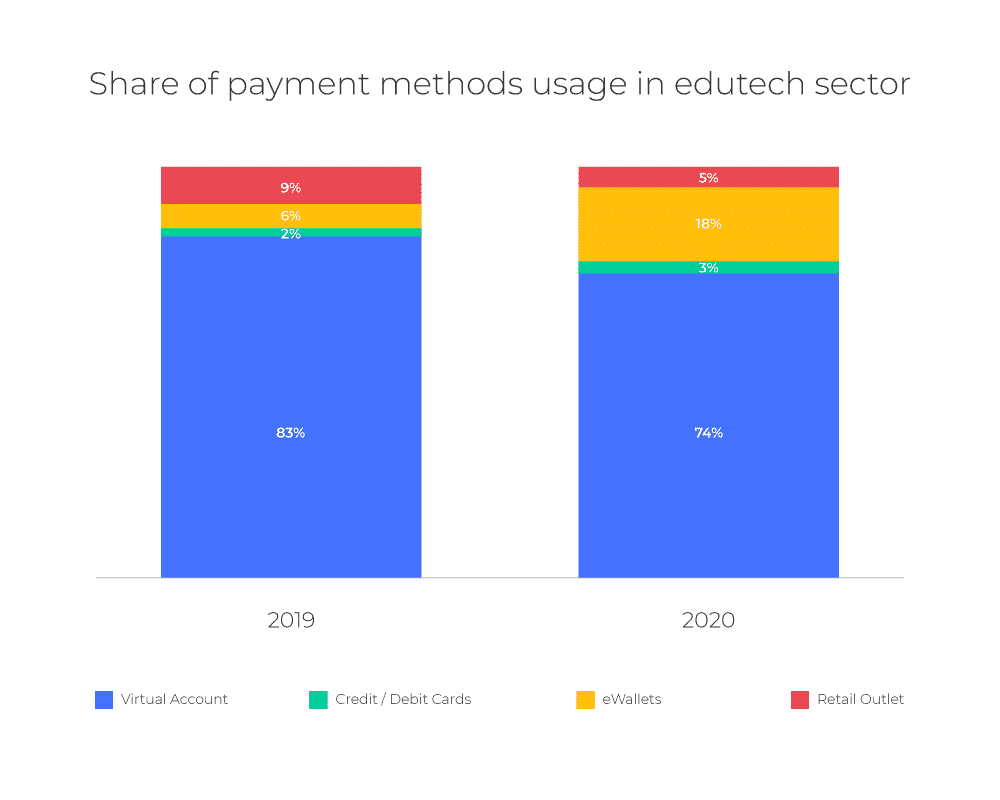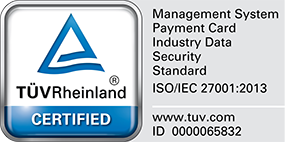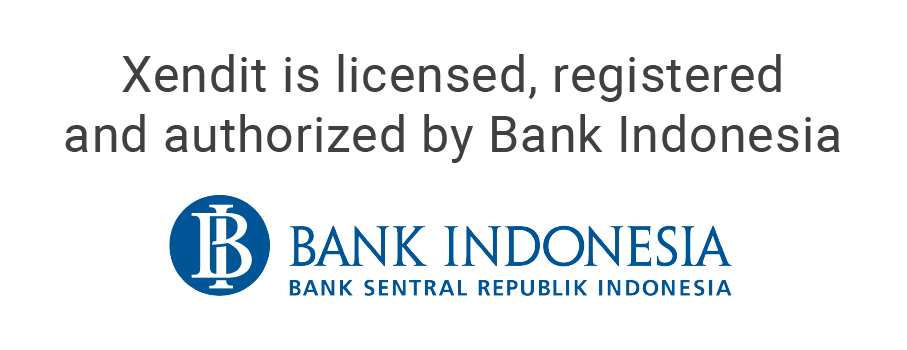Key takeaways:
- While early entrants such as Zenius and Ruangguru have dominated the traditional market, opportunities in specific niche markets such as learning management systems and workforce preparations remain wide open.
- New players in the sector can compete not just by crafting good quality content but also by optimizing the end-to-end user experience while addressing connectivity gap and generation gap.
With 55 million students enrolled in kindergarten all the way to tertiary level, Indonesia presents a significant opportunity in the education technology (edutech) sector. The sector’s growth is also propelled by the increasing internet penetration in the country, which has enabled 74% of the population to access content online. The industry is expected to grow even larger amidst the prolonged pandemic, where schools are indefinitely close and students are studying from home.
The Edutech sector includes a broad range of businesses offering different types of services which can be broken down into business to consumers (B2C) and business to business (B2B).
B2C edutech offers content directly to students with either pay to access models or monthly subscription plans. While the competition in such a market is tight with early entrants such as Ruangguru and Zenius opportunities remain open for new players willing to cater to specific niche. For example, Pahamify offered an online university entrance exam try out, which positioned the brand uniquely in the competition.
Major players in the industry are backed up by steady investors. A prominent edtech startup, Ruangguru, raised series C funding in December 2019 from well known backers including General Atlantic, GGV Capital, EV Growth and UOB Venture Management, while the newly founded Pahamify, is backed by the startup accelerator, Y Combinator.
B2B edutech offers learning management systems to schools and other educational institutions, enabling teachers to digitize classrooms and track students’ scores. It is an uncharted territory with only a handful of existing players such as Scola and Gredu operating in the market. The solution is in high demand as online education has become the norm due to the pandemic.
Edutech sector experience 2x QoQ growth
To understand just how large the growth in the industry had been, we analysed aggregate transactions processed on our payments platform by edutech companies, where there was notable growth in recent quarters.

The sector experienced a 2x QoQ growth in Q2 2020. It should be noted that the quarter marks the beginning of the restrictions on physical gathering which includes school closure and the beginning of school from home. The restrictions prompted students to seek supplementary materials to understand lessons, which drives up demand for edutech. While restrictions on other activities such as offices and shopping malls had loosened up, schools remained indefinitely closed, which possibly drives the continued upward trends in Q4 2020.
The continued growth might also be driven by a new sub-sector within the industry; the workforce preparation courses. This category includes platforms such as Skill Academy (owned by Ruangguru) and Pijar, offering courses and bootcamps to equip workers with applicable skills such as coding, graphic design and entrepreneurship. Some of the companies in the sector are backed by the government’s pre-employment card program, launched in April 2020, which aims at increasing employment rate among youths.
Roadblocks in edutech sector
Building an edtech platform is not only about creating insightful content, but also providing seamless experience for students — from designing a quality UI design to providing convenient payment for users. Below we outline some of the major challenges in managing an edtech platform.
Connectivity gaps among users
While internet penetration is reaching 171 millions of the Indonesian population, speed remains an issue, especially among semi-urban and rural populations. The disrupted bandwidth and connectivity can deter students from accessing online education content. For some, the experience is far from enjoyable.
While there are quick fixes to the problem, such as allowing users to download the content prior to viewing, it is important for online education platforms to develop a technological stack to compress audio-visual content, making them accessible to students with lower-speed internet connection.
Technological Adoption for Digital Immigrants
While direct to student edtech such as Ruangguru and Pahamify mostly targets Gen Z and digital native users, the B2B offering school management software has to include teachers, and even parents within their target audience.
The dependence on traditional learning systems is too grounded to allow a smooth transition to the digital space. It is important for up and coming edtech startups to design a user-friendly UX that makes the technology easy to use for all users.
Monetization opportunities in edutech sector
While it is clear that the sector’s market size is growing, there are numerous insights to consider when evaluating the industry’s potential, including understanding the monetization opportunities and willingness to pay.
In terms of billing model, a semesterly or monthly subscription plan is most popular among edutech targeting the school students segments, while purchase per course model is more popular in the workforce preparation segments.
The chart below shows the split in transaction size, where more than 35% of all transactions in the sector consists of transactions between Rp 100,000 and Rp 300,000.

In the school student segments, costs varied across different levels of education and different providers. On average, a subscription plan in the edutech sector costs around Rp 100,000 (US$7) to Rp 300,000 (US$21) per month, which is considerably expensive for the average Indonesian. To put things into perspective, Netflix charges US$9 for its basic subscription plan.
Edutech in the workforce preparation segment typically charges Rp 200,000 to Rp 500,000 per course, which costs much more than the school student segments.
To succeed at acquiring and retaining paying users, it is of utmost importance for edutech platforms to improve checkout experience. In a fragmented payment landscape like Indonesia, enabling locally preferred payment methods can boost conversion rates.
Virtual account remains the top payment option in the edutech sector
Chart below details the split in payment methods in the edutech sector where share of e-Wallet payments have tripled in 2020 compared to the previous year.

While e-Wallet adoption has increased in the sector, the number is still underwhelming compared to other industries. e-Wallet contributed to 43% of all transactions in Xendit payment platforms, significantly higher than its usage in the edutech industries. Meanwhile, virtual account transactions continue to dominate, with 74% of all transactions in the edutech sector made using bank transfers.
Integrating with multiple different payment partners can be difficult and costly to maintain. Consider enabling the payment method with a payment gateway like Xendit to activate all payment methods in a single integration and monitor transactions on a consolidated dashboard.
About Xendit
Xendit is a financial technology company that provides payment solutions and simplifies the payment process for businesses in Indonesia, the Philippines and Southeast Asia, from SMEs and e-commerce startups to large enterprises. Amidst the fragmented payment landscape in Southeast Asia, Xendit enables businesses to accept payments from direct debit, virtual accounts, credit and debit cards, eWallets, retail outlets, and online installments
For many businesses, accepting payments online is new territory, but we’re here to help. We have helped 1000s of businesses come online and we’d love to help you too.
Find out more about Xendit, or sign up to try our dashboard!












